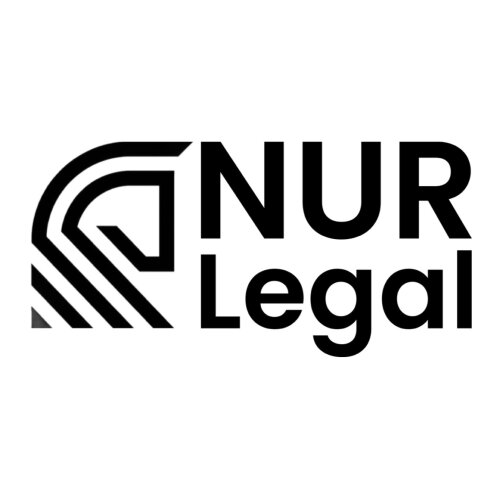Best Restructuring & Insolvency Lawyers in Estonia
Share your needs with us, get contacted by law firms.
Free. Takes 2 min.
Or refine your search by selecting a city:
List of the best lawyers in Estonia
About Restructuring & Insolvency Law in Estonia
Restructuring and insolvency law in Estonia governs the processes related to companies and individuals facing financial distress or an inability to meet their debts. This legal area facilitates both the rehabilitation of financially troubled businesses and the orderly management of assets when insolvency occurs. The main goal of these laws is to protect the rights of creditors while also giving debtors a fair opportunity to resolve their financial issues. Estonian legislation provides specific frameworks for restructuring, reorganization, and bankruptcy, tailored to ensure transparency, predictability, and fairness in financial crisis situations.
Why You May Need a Lawyer
Navigating restructuring and insolvency situations can be complex and high-stakes, making legal advice essential. Common reasons to seek a lawyer in this field include:
- Facing significant debt or cash flow problems as a business or individual
- Pursuing legal protection from creditors to buy time for restructuring
- Being a creditor seeking repayment from an insolvent company
- Needing advice on entering bankruptcy or reorganization proceedings
- Contesting or negotiating repayment schedules with creditors
- Dealing with cross-border debts and international insolvency scenarios
- Ensuring compliance with all procedural and reporting obligations
- Challenging unfair transactions or fraudulent transfers detected during insolvency
A specialized lawyer can help clarify your options, represent your interests in court or negotiations, and help achieve the best possible outcome during financial restructuring or insolvency proceedings.
Local Laws Overview
Estonian restructuring and insolvency law is primarily governed by the Bankruptcy Act, the Reorganization Act, and related civil codes. Here are some key aspects of the local legal landscape:
- Bankruptcy Proceedings: If a debtor is permanently insolvent, bankruptcy can be initiated by the debtor or creditors. The court appoints a trustee to manage the debtor’s assets, and creditors’ claims are handled according to strict legal timelines.
- Reorganization Proceedings: Companies with payment difficulties but with the potential for recovery may apply for reorganization. This process allows restructuring of debts, extension of payment terms, or reduction of liabilities under court approval.
- Out-of-Court Restructuring: Debtors and creditors may also negotiate private settlements or restructuring agreements without formal court proceedings, though these arrangements may not bind all creditors.
- Cross-Border Insolvency: Estonia recognizes certain foreign insolvency proceedings, and cooperation with EU regulations is standard, especially for companies with assets or business across different countries.
- Legal Protections: During restructuring or insolvency, certain legal actions against the debtor, such as enforcement or seizure, may be suspended to ensure fairness.
- Director Responsibilities: Company managers or directors have duties to avoid worsening the firm’s financial state and must promptly file for bankruptcy when insolvency is clear. Failure to do so can result in personal liability.
- Protection of Creditors: The law includes measures to prevent fraudulent asset transfers and ensure creditors are treated equitably according to established priorities.
Frequently Asked Questions
What is the difference between bankruptcy and reorganization in Estonia?
Bankruptcy is a procedure for insolvent debtors who cannot meet their obligations, resulting in the liquidation and distribution of assets. Reorganization allows distressed companies to restructure their debts and operations with the aim of returning to solvency without liquidation.
Who can file for bankruptcy in Estonia?
Both debtors and creditors can petition the court to declare bankruptcy if the debtor is permanently insolvent. The application must provide evidence of financial distress.
What happens after a bankruptcy petition is submitted?
The court reviews the petition and may initiate a bankruptcy procedure if insolvency is established. A bankruptcy trustee is appointed, assets are inventoried, and creditors can file claims for repayment.
How are creditors paid during bankruptcy proceedings?
Creditors are repaid based on a legally defined priority order. Secured creditors and claims with special status are usually paid first, followed by unsecured creditors.
Can I continue to manage my company after bankruptcy is declared?
No, company management loses control once bankruptcy is declared. The appointed trustee assumes control of the company and its assets.
What is a reorganization plan and how is it approved?
A reorganization plan is a document outlining proposed measures for restoring the company’s solvency. It must be approved by the creditors and confirmed by the court to take effect.
Are directors personally liable for debts if a company goes bankrupt?
Directors can be held personally liable if they fail to take timely action upon becoming aware of insolvency or if they violate their legal duties during the management of the company.
Is personal bankruptcy possible in Estonia?
Yes, natural persons (individuals) can also file for bankruptcy if they are unable to meet their financial obligations and fulfill the necessary legal criteria.
How long does bankruptcy or reorganization usually take?
The duration varies depending on the case’s complexity, but bankruptcy can last from several months to a few years, while reorganization usually takes several months if the plan is accepted and implemented smoothly.
Will bankruptcy or restructuring affect my credit history?
Yes, both bankruptcy and reorganization will have an impact on creditworthiness and may be recorded in public registers, affecting access to credit in the future.
Additional Resources
For those seeking further guidance, the following resources and organizations are helpful:
- Estonian Chamber of Commerce and Industry - for general business advice and insolvency information
- Estonian Financial Supervision Authority - for oversight and regulation involving financial institutions
- Estonian Ministry of Justice - for legislation, regulations, and official guidance
- Estonian Bar Association - to find qualified restructuring and insolvency lawyers
- Bankruptcy and Reorganization Database - managed by the courts and Ministry of Justice
- Consumer Protection and Technical Regulatory Authority - for support related to consumer insolvency issues
Next Steps
If you are facing financial difficulties or creditors are taking action against you, it is advisable to act quickly:
- Gather all relevant financial documents and records
- Assess your current liabilities and assets with the help of a financial advisor if possible
- Contact a lawyer who specializes in restructuring and insolvency matters
- Discuss your options, including reorganization, bankruptcy, or out-of-court settlements
- Follow your lawyer’s instructions regarding timelines, document submissions, and court communication
- Communicate openly with creditors where appropriate and avoid making preferential payments
Early professional guidance often results in better outcomes, whether your goal is to restructure finances, negotiate with creditors, or pursue formal insolvency proceedings in Estonia.
Lawzana helps you find the best lawyers and law firms in Estonia through a curated and pre-screened list of qualified legal professionals. Our platform offers rankings and detailed profiles of attorneys and law firms, allowing you to compare based on practice areas, including Restructuring & Insolvency, experience, and client feedback.
Each profile includes a description of the firm's areas of practice, client reviews, team members and partners, year of establishment, spoken languages, office locations, contact information, social media presence, and any published articles or resources. Most firms on our platform speak English and are experienced in both local and international legal matters.
Get a quote from top-rated law firms in Estonia — quickly, securely, and without unnecessary hassle.
Disclaimer:
The information provided on this page is for general informational purposes only and does not constitute legal advice. While we strive to ensure the accuracy and relevance of the content, legal information may change over time, and interpretations of the law can vary. You should always consult with a qualified legal professional for advice specific to your situation.
We disclaim all liability for actions taken or not taken based on the content of this page. If you believe any information is incorrect or outdated, please contact us, and we will review and update it where appropriate.
Browse restructuring & insolvency law firms by city in Estonia
Refine your search by selecting a city.
















